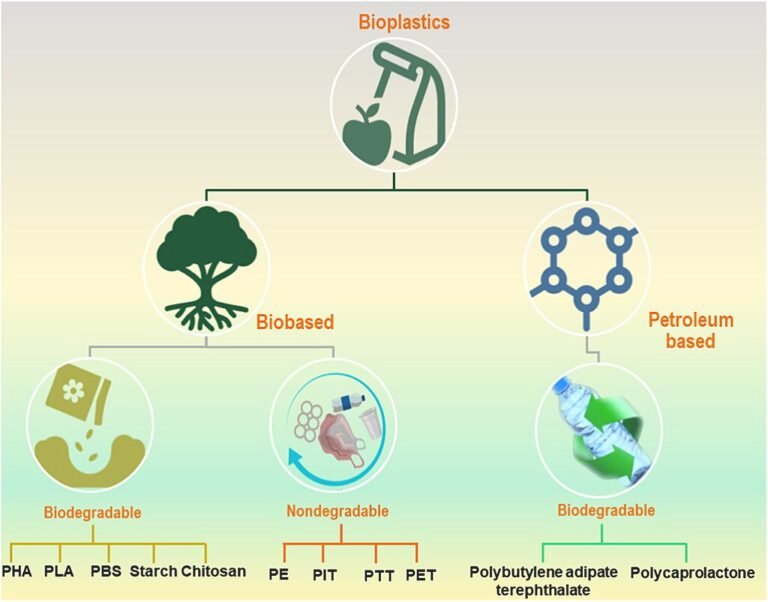10 Ways to Reduce Waste at Home
Reducing waste at home isn’t just about being trendy or checking off a sustainability goal—it’s about real, tangible change. I didn’t always think this way. Five years ago, my household was like most: overflowing trash cans, plastic packaging everywhere, and food waste we barely noticed. I wasn’t aware of the impact my habits had on the planet. But then I came across a statistic that changed my perspective: On average, a person generates hundreds of kilograms of waste per year, much of which ends up in landfills or pollutes our environment. I realised something had to change.
My journey started small—switching to reusable bags, composting food scraps, and avoiding single-use plastics. At first, it was challenging. I forgot my reusable grocery bags more times than I’d like to admit, and composting felt messy. But over time, these small changes added up. Now, my household produces about a third of the waste it used to, and I’ve discovered so many simple, effective ways to cut down on waste without sacrificing convenience.

In This Article
- Understanding Waste Reduction: The Key Pillars
- 1. Conduct a Household Waste Audit
- 2. Reduce Food Waste
- 3. Ditch Single-Use Plastics
- 4. Buy in Bulk
- 5. Embracing Reusable Household Items
- 6. Repair, Repurpose, and Upcycle
- 7. Compost Organic Waste
- 8. Opt for Digital Over Paper
- 9. Donate or Sell Unwanted Items
- 10. Educate and Involve Your Community
- Conclusion
Understanding Waste Reduction: The Key Pillars
To effectively reduce waste, it helps to understand what waste really is and the best ways to tackle it. Waste comes in many forms, and addressing it requires a strategic approach. Let’s break it down.
The Different Types of Waste
- Household Waste: This includes everything we throw away daily—packaging, paper, plastic, broken household items, and more.
- Food Waste: Spoiled food, leftovers, peels, and scraps make up a huge portion of household waste. According to the USDA, 30-40% of the U.S. food supply is wasted.
- Plastic Waste: One of the biggest environmental threats, plastic waste includes bottles, bags, wrappers, and other single-use plastics. Shockingly, only 9% of plastic waste ever produced has been recycled, according to the UN.
- Electronic Waste (E-Waste): Old phones, laptops, chargers, and batteries contribute to harmful landfill waste if not properly recycled.
- Hazardous Waste: This includes cleaning chemicals, paints, and batteries that need special disposal methods.
The Pillars of Waste Reduction
To cut down on waste effectively, follow these fundamental principles:
- Refuse – Say no to items you don’t need, especially single-use plastics and unnecessary packaging.
- Reduce – Cut down on consumption by buying only what you need and choosing durable products.
- Reuse – Opt for reusable alternatives like cloth bags, glass containers, and refillable bottles.
- Recycle – Properly sort and dispose of recyclable materials to keep them out of landfills.
- Rot (Compost) – Turn organic waste into nutrient-rich compost instead of sending it to landfills.
1. Conduct a Household Waste Audit
Before we can effectively reduce waste in our homes, it’s crucial to understand what we’re discarding. This process, known as a household waste audit, involves examining our trash to identify patterns and areas for improvement. Here’s how you can conduct one:
- Collect and Categorise Your Trash Over a Week: Set aside a week to gather all your waste. Use separate bins or bags for different categories, like food scraps, plastics, paper, and glass.
- Identify Frequent Waste Items: At the end of the week, review each category to see which items appear most often. This step helps pinpoint where changes are needed.
- Find Alternatives to Minimise Them: Once you’ve identified the main culprits, brainstorm alternatives. For example, if disposable coffee cups are a common item, consider using a reusable mug.
Real-Life Example:
In a 2024 study conducted in Switzerland, 89 households participated in a ten-day waste diary project. Participants tracked their waste generation and found that a significant portion consisted of avoidable food waste. By becoming aware of their waste patterns, many households adopted better meal planning and storage practices, leading to a noticeable reduction in waste.
2. Reduce Food Waste
Food waste is a pressing global issue with both environmental and financial implications. The United Nations reports that approximately 13.2% of food produced is lost between harvest and retail, and an estimated 19% of total global food production is wasted at the household level.
Ways to Minimise Food Waste:
- Plan Meals and Create Shopping Lists: By planning your meals for the week and sticking to a shopping list, you can avoid impulse purchases that may go unused.
- Store Food Properly to Extend Its Shelf Life: Proper storage can significantly extend the freshness of your food. For instance, storing soft fruits like strawberries and blueberries in glass jars can keep them fresh longer.
- Use Leftovers Creatively: Transform leftovers into new meals. For example, roasted vegetables can be added to salads or turned into soups.
- Start Composting: Composting organic waste like fruit peels and coffee grounds reduces landfill waste and produces nutrient-rich soil for gardening.
Expert Insight:
“Food waste has an outsized role in landfill methane emissions. If global food waste were a country, it would be the third-largest emitter after China and the U.S.” – Dr. Max Krause, Environmental Protection Agency (EPA) Researcher..
Recent Developments:
In Sydney, Australia, an innovative approach to tackling food waste has been implemented. The city partnered with the start-up Goterra to use black soldier fly larvae to process food waste. This method not only diverts waste from landfills but also produces protein-rich feed for livestock, showcasing a sustainable solution to food waste
Learn More: The Circular Economy at Home
3. Ditch Single-Use Plastics
Single-use plastics have become an integral part of our daily lives, but their convenience comes at a significant environmental cost. According to the Organisation for Economic Co-operation and Development (OECD), global plastic waste generation more than doubled from 2000 to 2019, reaching 353 million tonnes. Of this, only 9% was recycled, while 50% ended up in landfills, and 22% was mismanaged, leading to pollution in terrestrial and aquatic environments.
Understanding the Impact
Reflecting on my own habits, I realised how often I relied on single-use plastics—be it shopping bags, water bottles, or coffee cups. This dependency contributed to the growing plastic pollution problem. In the UK and Channel Islands, for instance, single-use plastic waste on beaches increased by 9.5% in 2024, highlighting the escalating issue.
Practical Alternatives to Single-Use Plastics
Transitioning away from single-use plastics doesn’t have to be daunting. Here are some simple swaps that can make a substantial difference:
- Reusable Shopping Bags: Investing in durable cloth bags can significantly cut down plastic bag usage. For example, Australian retailer Woolworths introduced “The Universal Bag,” made from 100% recycled materials, aiming to reduce plastic waste.
- Refillable Water Bottles and Coffee Cups: Using stainless steel or glass bottles and cups minimises the need for disposable ones.
- Glass or Stainless Steel Containers: These are excellent for storing food, reducing reliance on plastic wrap and single-use containers.
- Minimal Packaging Products: Opting for items with little to no packaging or choosing products packaged in recyclable materials can lessen plastic waste.
Personal Experience: A Shift in Habits
My journey toward reducing plastic waste began with small, conscious choices. I started bringing my own cloth bags to the grocery store and requested that produce be wrapped in paper instead of plastic. Within months, these simple changes led to a nearly 70% reduction in my household’s plastic waste.
Community Initiatives and Corporate Responsibility
It’s heartening to see communities and businesses taking steps to address plastic pollution. For example, Coles, another Australian supermarket chain, is testing a program where customers can reuse cardboard boxes for produce, aiming to cut down on single-use plastic bags.
The Bigger Picture
Globally, there’s a growing movement to reduce plastic waste. In the United States, about one-third of adults have consciously reduced their use of plastic products over the past five years, reflecting a shift toward more sustainable habits.
4. Buy in Bulk
Purchasing items in bulk is a practical approach to reducing packaging waste and often results in cost savings. By buying larger quantities, especially of non-perishable goods, we minimise the frequency of purchases and the associated packaging. This method not only benefits the environment but also streamlines shopping habits.
Benefits of Buying in Bulk:
- Less Packaging Waste: Bulk buying reduces the amount of packaging waste generated from individual-sized products, helping to combat plastic pollution.
- Resource Conservation: Purchasing in bulk reduces the need for excess packaging materials and conserves resources such as water and energy used in manufacturing and transportation.
- Cost Savings: Buying in bulk often leads to cost savings per unit, allowing you to save money while making eco-friendly choices.
Real Experience:
Transitioning to bulk buying was a game-changer for my household. We began by identifying staple items like grains, nuts, and cleaning supplies that we frequently used. By purchasing these in larger quantities, we noticed a significant decrease in the amount of packaging waste we generated. Additionally, our grocery bills became more predictable, and we made fewer trips to the store, saving both time and fuel. This shift not only benefited our wallets but also reinforced our commitment to sustainable living.
5. Embracing Reusable Household Items
In our daily lives, it’s easy to rely on disposable items for their convenience, but this habit contributes significantly to environmental waste. Transitioning to reusable household items is a practical step toward sustainability. Here’s how you can make simple swaps:
- Paper Towels → Cloth Towels: Instead of reaching for paper towels, consider using cloth towels or rags. They’re washable, durable, and reduce paper waste.
- Plastic Wrap → Beeswax Wraps: Replace plastic wrap with beeswax wraps. These wraps are reusable, moldable with the warmth of your hands, and can be washed and reused multiple times.
- Disposable Razors → Safety Razors: Switching to a safety razor not only provides a closer shave but also reduces plastic waste. The metal blades are recyclable, and the razor itself can last a lifetime with proper care.
- Cotton Rounds → Reusable Makeup Pads: Reusable makeup pads made from soft fabrics can be washed and reused, minimising daily waste from disposable cotton rounds.
Real-World Example:
Cindy Mead, a Brisbane-based influencer, launched Améli Home, a collection of stylish, reusable containers made from 100% recycled plastic. Her initiative aims to reduce single-use plastics in households, offering products like BPA-free bottles and trays in various colours. The overwhelming positive response to her collection highlights a growing consumer support for sustainable homeware options.
6. Repair, Repurpose, and Upcycle
Before discarding broken or old items, consider repairing or repurposing them. This approach not only reduces waste but also fosters creativity and resourcefulness. Many communities support this mindset through initiatives like repair cafés.
Understanding Repair Cafés:
Repair cafés are community events where volunteers help fix broken items, from electronics to clothing. These gatherings promote a culture of repair over disposal, extending the lifespan of products and reducing landfill waste.
Impactful Statistics:
- In 2018, all Repair Cafés worldwide prevented approximately 350,000 kilograms of waste, equivalent to the weight of 58 adult African elephants.
- In Maine, USA, a single repair café event diverted 73 pounds of waste from the landfill in one day, showcasing the tangible impact of such initiatives.
7. Compost Organic Waste
Composting is a simple yet impactful way to reduce household waste and enrich your garden soil. By diverting organic materials like food scraps from landfills, we not only decrease methane emissions—a potent greenhouse gas—but also create nutrient-rich compost that benefits our plants. Even if you live in an urban setting, there are composting methods tailored to fit your lifestyle.
Types of Composting:
i. Backyard Composting
This traditional method involves collecting organic waste, such as fruit peels, vegetable scraps, coffee grounds, and yard debris, in a designated outdoor area or bin. Over time, with regular turning and proper moisture, these materials break down into compost. Many gardeners cherish this “black gold” for its ability to improve soil structure and fertility.
ii. Bokashi Fermentation
Originating from Japan, bokashi composting is an anaerobic process that ferments food waste using beneficial microbes. This method is particularly efficient, taking about two weeks to transform kitchen scraps into a pre-compost state. One of the standout features of bokashi is its ability to process items typically avoided in traditional composting, such as meat and dairy products. After fermentation, the material is buried in soil, where it decomposes further, enriching the earth. For urban dwellers with limited space, bokashi offers a compact and odour-minimised solution.
iii. Vermicomposting (Worm Composting)
Vermicomposting utilises specific worm species, like red wigglers, to consume organic waste, producing nutrient-dense worm castings. This method is ideal for indoor setups, making it perfect for apartment residents. A simple bin with bedding material and a colony of worms can efficiently process food scraps, resulting in compost that’s highly beneficial for plants.
Learn More: 20 Examples of Biodegradable and Non-Biodegradable Waste
8. Opt for Digital Over Paper
In our digital age, reducing paper consumption is both feasible and environmentally responsible. Transitioning to digital alternatives not only decreases waste but also conserves resources and reduces carbon emissions.
Steps to Reduce Paper Use:
- Choose E-Bills and E-Statements: Many service providers offer electronic billing options. Opting for e-bills reduces paper clutter and ensures the timely receipt of statements.
- Use Note-Taking Apps: Digital note-taking applications allow for organised and easily searchable notes, eliminating the need for physical notebooks.
- Print Only When Necessary: Before hitting the print button, consider if a digital copy would suffice. This habit can significantly cut down on paper usage.
Environmental Impact:
The transition to paperless operations offers clear environmental benefits. A study by the United Nations Economic and Social Commission for Asia and the Pacific (ESCAP) found that switching to e-invoicing resulted in a 63% reduction in greenhouse gas emissions per invoice due to increased efficiency. Additionally, paper waste constitutes a significant portion of landfill content. By adopting digital solutions such as e-invoicing, we can substantially cut paper consumption and contribute to a more sustainable future.
9. Donate or Sell Unwanted Items
We’ve all been there—standing in front of a closet or garage filled with items we no longer use, pondering their fate. Instead of relegating these belongings to the landfill, consider donating or selling them. This approach not only benefits the environment but also supports communities and can even provide personal financial gains.
Environmental Impact
The rise of fast fashion has led to a significant increase in textile waste. In the United States alone, individuals dispose of approximately 81.5 pounds of clothing per person annually. By donating or selling these items, we can divert a substantial amount of waste from landfills, promoting a more sustainable lifestyle.
Economic Benefits
Selling unwanted items can provide a financial boost. Platforms like eBay, Poshmark, or The RealReal allow individuals to earn from items they no longer need, ensuring these products find new owners while offering some returns. On the other hand, donating items in good condition can lead to tax deductions, offering another form of financial benefit.
Community Benefits
Donating items fosters a sense of community and supports local organisations. For instance, the Hobart City Mission reported that over 644,000 clothing items were sold in their shops in the past year, diverting substantial textile waste from landfills. The funds raised from these sales support essential community programs such as emergency relief, housing, and food assistance.
Considerations When Donating or Selling
It’s essential to ensure that donated items are in good condition. Donating damaged or broken items can create more waste and burden charities. When selling, platforms like Facebook Marketplace, Craigslist, and thrift stores can help extend the lifespan of goods, connecting items with new owners who will appreciate them.
10. Educate and Involve Your Community
Embarking on a personal journey to reduce waste is commendable, but amplifying that impact through community involvement can lead to transformative change. By sharing knowledge and resources, we can cultivate a culture of sustainability that benefits everyone.
Organize a Neighborhood Swap Event
Hosting a neighbourhood swap event is an excellent way to promote reuse and strengthen community bonds. Neighbours can exchange items they no longer need, such as clothing, books, or tools, ensuring these products find new homes instead of ending up in landfills.
Join Local Sustainability Groups
Participating in local sustainability groups provides a platform to share ideas, resources, and support. These groups often organise workshops, clean-up drives, and educational sessions that empower community members to adopt eco-friendly practices. For example, the Glenorchy council initiated a “Treasure Trail,” featuring nine op shops from Glenorchy to Claremont, promoting a circular economy and reducing waste.
Share Tips on Social Media
Leveraging social media platforms to share waste reduction tips, success stories, and local recycling information can inspire a broader audience. By highlighting personal experiences and practical advice, you can motivate others to adopt sustainable habits.
Success Stories
Communities worldwide have achieved remarkable results through collective efforts. In Tierra Bomba, Colombia, the foundation Amigos del Mar addressed plastic waste by engaging the community in environmental education and water sports, particularly surfing. Their program turns collected plastic bottle caps into surfboard fins, reducing pollution and incentivising local children to participate in environmental lessons.
Learn More: 15 Zero-Waste Examples
Conclusion
Reducing waste at home is an ongoing journey that requires commitment, creativity, and community effort. By implementing these ten strategies, you can make a tangible impact on the planet and inspire others to do the same. Start with one change today, and watch how your waste footprint diminishes over time.
What’s your first step towards a waste-free home?







